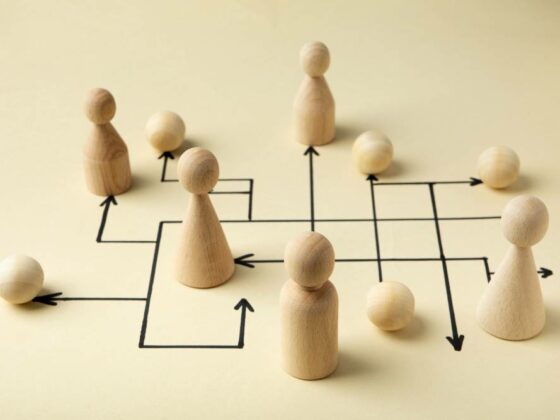As a Product Design Manager, one of the crucial aspects of my role is navigating the delicate balance between satisfying the needs of stakeholders and maintaining a strong design vision. By effectively managing stakeholders and upholding a clear design vision, we can drive successful product outcomes that resonate with both the target audience and business objectives.
In this article, we will explore the significant role of Design Leadership in achieving this equilibrium.
Understanding the Stakeholder Landscape

Design leaders must first gain a deep understanding of the stakeholder landscape surrounding a project. This involves identifying key stakeholders, such as executives, product managers, developers, and marketing teams, who have a vested interest in the design outcomes.
By recognising their unique perspectives and priorities, we can tailor our approach to align with their needs while advocating for user-centric design principles.
Balancing Stakeholder Needs

Achieving a delicate balance between stakeholder needs and design vision requires open and effective communication. Here are a few strategies to help achieve this balance:
- Active Listening: Engage in active listening to truly understand stakeholder perspectives and concerns. This helps foster empathy and build trust, enabling collaborative decision-making.
- Transparent Communication: Establish an open and transparent line of communication with stakeholders. Regularly share design insights, progress, and challenges to ensure alignment throughout the project lifecycle.
- Educate and Advocate: As design leaders, it is our responsibility to educate stakeholders about the value and impact of user-centered design. By showcasing the benefits of a strong design vision, we can garner support and facilitate a shared understanding.
Maintaining a Clear Design Vision

While meeting stakeholder needs is essential, design leaders must also champion a clear design vision to drive innovative and impactful solutions. Here are some key considerations:
- User-Centric Approach: Place the user at the center of the design process. Conduct thorough research, gather user insights, and ensure that design decisions are guided by user needs and preferences.
- Design Principles: Define and communicate a set of design principles that align with the brand values and user expectations. These principles serve as a guidepost to maintain consistency and coherence in the design vision.
- Collaborative Design Sessions: Engage stakeholders in collaborative design sessions to foster a shared understanding of the design vision. By involving stakeholders in the ideation process, we build a sense of ownership and promote alignment.
Design leadership plays a vital role in balancing stakeholder needs and design vision. By effectively managing stakeholders through active listening, transparent communication, and education, we can align their expectations with the user-centered design process.
Simultaneously, maintaining a clear design vision driven by user insights and collaborative sessions empowers us to deliver innovative and impactful solutions.
Conclusion
As Design Leaders, it is our responsibility to navigate this delicate balance, ensuring that the final product resonates with users while meeting business goals.
By leveraging the power of design leadership, we can drive successful product outcomes that achieve the ultimate synergy between stakeholder needs and design vision.
Remember, successful design leadership hinges on effective stakeholder management and a strong design vision. Embrace the challenge, engage stakeholders, and drive innovative solutions that captivate users and deliver business value.



